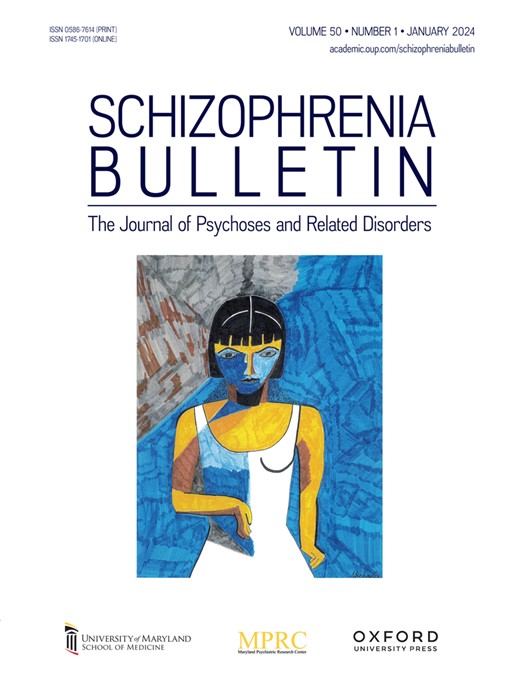19 BEHAVIOR MODIFICATION IN SCHIZOPHRENIC PATIENTS WITH TRADITIONAL FAMILY CULTURE TREATED WITH PALIPERIDONE
IF 5.3
1区 医学
Q1 PSYCHIATRY
引用次数: 0
Abstract
Background Schizophrenia is a chronic mental illness characterized by cognitive, affective, and behavioral disorders, and its patients often exhibit impaired social functioning. In traditional Chinese culture, family training has an important influence on shaping personal behavior, and schizophrenia patients who are influenced by traditional family training culture may need additional patient behavior modification during treatment. Paliperidone, as a new antipsychotic drug, has attracted much attention for its significant therapeutic effect on patients with schizophrenia. This study explores the efficacy of behavior modification in patients with schizophrenia under the intervention of paliperidone treatment combined with traditional family training and cultural background intervention. Methods The study recruited 80 patients with schizophrenia, of whom 40 were exposed to traditional family training culture as the experimental group, and the remaining 40 were not exposed to traditional family training culture as the control group. All patients met the diagnostic criteria for schizophrenia in the Diagnostic and Statistical Manual of Mental Disorders (DSM-5). All patients signed informed consent. The study used the Positive and Negative Syndrome Scale (PANSS), the Social Disability Screening Schedule (SDSS) and the Behavioral Adaptation Scale (BAS) to evaluate the treatment effect of patients, and recorded the scale scores of different treatment cycles. Results The study compared and analyzed the BAS scale evaluation results of the two groups of patients and compared the scores of patients at different treatment times as shown in Table 1. As can be seen from Table 1, there are differences in the scores of schizophrenia patients under different treatment cycles, with the experimental group having the highest scale score. After 12 weeks of treatment, the scale score of the experimental group reached 49.2±4.2, and the scale score of the control group reached 42.7±4.8. There was a statistically significant difference between the scale scores of the two groups of patients (P<0.05). Except for no treatment, there were significant statistical differences in the scale scores of the two groups of patients during the other treatment cycles (P<0.05). It can be seen that through paliperidone treatment combined with family training and cultural intervention, the patient has significant therapeutic effects in behavioral modification treatment. Discussion The results of the study showed that traditional family education combined with paliperidone treatment can effectively improve the behavioral adaptability of patients with schizophrenia, especially for some patients who are deeply influenced by traditional culture. However, the intervention treatment plan for different patients’ education and family background needs to be further improved. The study aims to provide more valuable references for the practical application of drug combined with cultural intervention treatment, and also provide new ideas for the treatment of schizophrenia. Funding No. QDSKL2101304.求助全文
约1分钟内获得全文
求助全文
来源期刊

Schizophrenia Bulletin
医学-精神病学
CiteScore
11.40
自引率
6.10%
发文量
163
审稿时长
4-8 weeks
期刊介绍:
Schizophrenia Bulletin seeks to review recent developments and empirically based hypotheses regarding the etiology and treatment of schizophrenia. We view the field as broad and deep, and will publish new knowledge ranging from the molecular basis to social and cultural factors. We will give new emphasis to translational reports which simultaneously highlight basic neurobiological mechanisms and clinical manifestations. Some of the Bulletin content is invited as special features or manuscripts organized as a theme by special guest editors. Most pages of the Bulletin are devoted to unsolicited manuscripts of high quality that report original data or where we can provide a special venue for a major study or workshop report. Supplement issues are sometimes provided for manuscripts reporting from a recent conference.
 求助内容:
求助内容: 应助结果提醒方式:
应助结果提醒方式:


